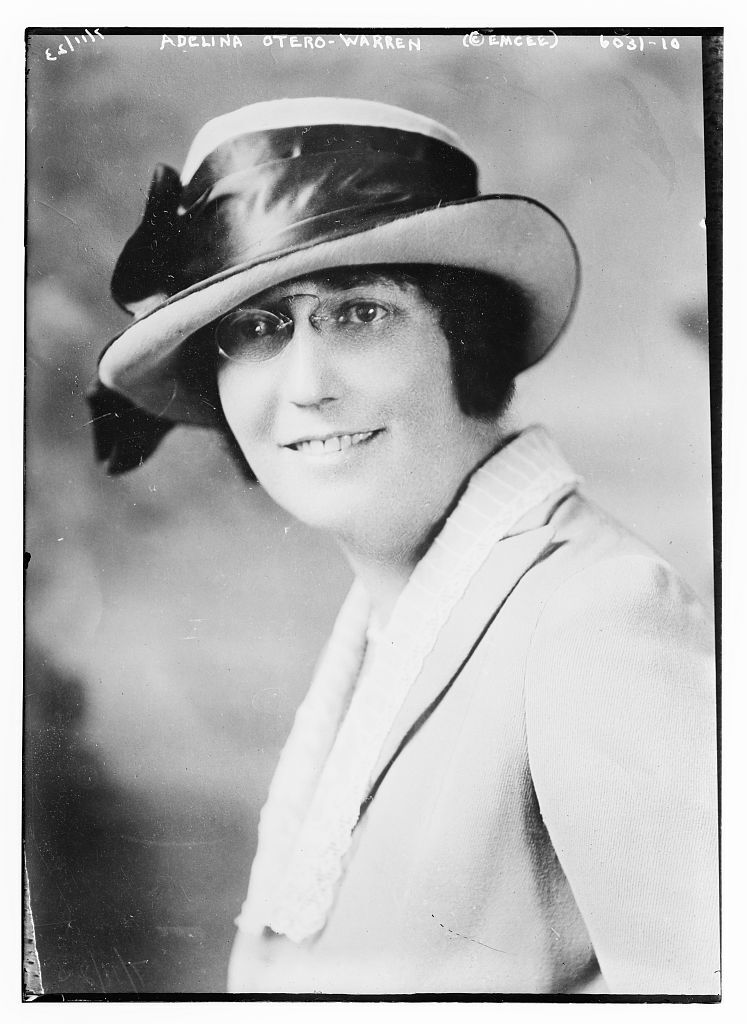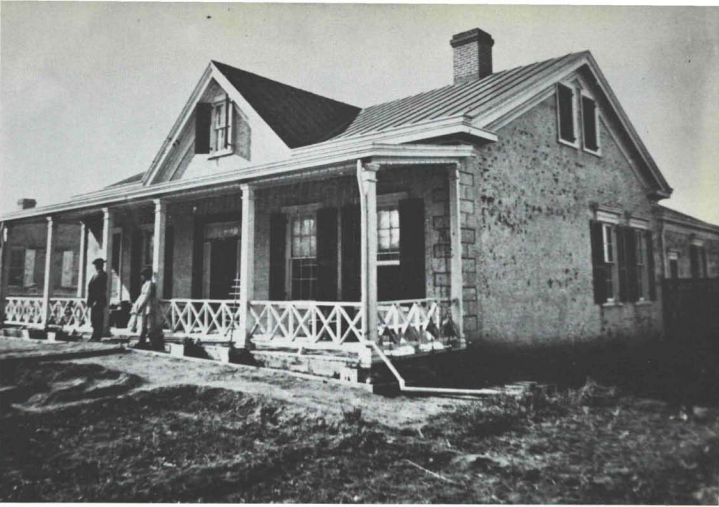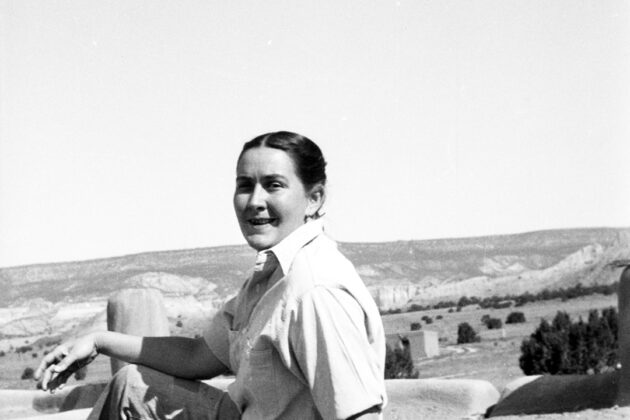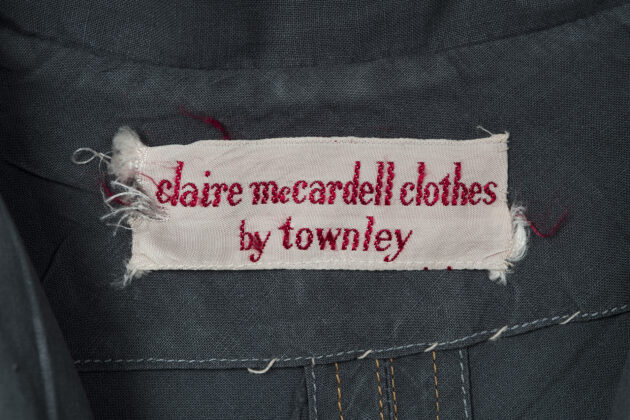
Nina Otero-Warren and the Quest for Women’s Right to Vote
As we celebrate the 100th anniversary of the passage of the 19th Amendment, which granted women the right to vote, the Georgia O’Keeffe Museum announces the renaming of the Otero-Bergere House by the Historic Santa Fe Foundation. Adelina “Nina” Otero-Warren was a longtime resident of the house and one of New Mexico’s most prominent suffragists. A suffragist is a person who fought for women’s right to vote.
100th anniversary of the passage of the 19th amendment
The women’s suffrage movement, a major social justice movement lasting from 1848 to 1920, resulted in the 19th Amendment officially becoming part of the U.S. Constitution on August 26, 1920. The amendment was voted on and passed by the House and Senate in 1919, taking multiple votes to pass in the Senate. During 1919 and 1920, the amendment was ratified by the states and on February 21, 1920 New Mexico was the 32nd state to do so.
It is important to note that the 19th Amendment did not grant all women the right to vote. It wasn’t until 1965, when the Voting Rights Act was passed into law, that voting discrimination based on “race, color, or national origin” was prohibited. In celebrating the centennial of the amendment, many people have made it a goal to amplify the voices of lesser-known suffrage activists and recognize women for which the fight for rights remained after white suffragists claimed victory in 1920. Some of these once overlooked stories can be found on the Women’s Vote Centennial website, including that of Nina Otero-Warren.
Nina Otero-Warren

Otero-Warren played a critical role in getting the 19th Amendment ratified in New Mexico, facing opposition from the governor, legislators, the Catholic Church, and many members of the community. Coming from a prominent family with several politicians, Otero-Warren worked tirelessly for the cause and was selected as New Mexico’s head of the Congressional Union for Woman Suffrage. She is credited for advocating for Spanish-speaking women and organized bilingual efforts throughout the state to support voting rights.
Otero-Warren’s efforts as a leading suffragist served her well as she continued to champion women’s rights, child welfare and education, and advance her role in politics. She held the position of superintendent of the Santa Fe school system from 1918 to 1929 and was a leader in the Republican Party of New Mexico, running for Congress in 1922. She narrowly lost the election. Otero-Warren remained active and dedicated to the community, serving on several boards including the New Mexico’s Board of Health and American Red Cross, as well as promoting education and literacy.
Otero-Bergere House

The Otero-Bergere House is named for two influential New Mexican families who lived in the house for much of the twentieth century, and was an important gathering place for Santa Fe’s social and political circles.
It is important to recognize that the structure stands on the unceded land of the Tewa people, and to acknowledge the Tewa people and other Indigenous people who have inhabited this land for centuries. While the renaming of this building provides an opportunity to acknowledge and explore a wider range of stories of individuals, experiences, and activities related to the home, it does not fully represent or encompass the complex history of this place. There is more work to be done to better understand and support our diverse community.
The original structure was one of six adobe buildings constructed in the 1870s as housing for officers and their families assigned to the Fort Marcy Military Reservation. In 1905, Eloisa Luna Otero Bergere purchased the home. With three children from her first marriage to Manuel Basilio Otero, she and her second husband, Alfred Maurice Bergere (for whom the home was formerly named), expanded their family with nine more children. The family members were important leaders in politics, government and social causes, and the home, known locally as “La Casa Grande” or “The Big House”, was a regular meeting spot and hub of activity.
The home was privately owned by the Otero and Bergere families until the mid-1970s and is currently the location of the Georgia O’Keeffe Museum’s library and archives, as well as the administrative and fellow offices. The building was added to the Historic Santa Fe Foundation’s Register of Properties Worthy of Preservation in 1974 and placed on the National Register of Historic Places in 1975.
Nina Otero-Warren at the Otero-Bergere House
Otero-Warren, one of the home’s most prominent residents, lived in the house for many years and was the unofficial head of household from 1939 until 1963, when the house was officially conveyed to her. She continued to manage the estate until her death in 1965. Otero-Warren’s role as a leading suffragist is acknowledged at the Otero-Bergere House as one of two New Mexico sites on the National Votes for Women Trail (a project of The National Collaborative for Women’s History Sites). She will also be recognized on August 23rd when the Women’s Vote Centennial Car Parade passes by the property as it follows the path the suffragists marched in October 1915 to implore Senator Thomas Benton Catron to support women’s voting rights.
Many thanks to Tori Duggan and Micaela Hester for their contributions to this story.
Learn More
Read more about the Historic Santa Fe Foundation’s Otero-Bergere House renaming. Stay tuned as the Museum shares more stories from the Otero-Bergere House throughout the year.
Learn more about the movement and the Women’s Vote Centennial from the Women’s Suffrage Centennial Commission, who launched a series of podcasts, blog posts and virtual events, and worked with Congress to designate August 2020 as National Women’s Suffrage Month.
Join the Women’s Vote Centennial Car Parade, organized by the League of Women Voters of New Mexico, in Santa Fe, August 23rd 2-3 pm. Honk as you pass the Otero-Bergere House!
Remember the fight and the right, and VOTE this coming election season!
Featured image: Otero-Bergere House, 2014. Photos By: 2014 Insightfoto.com. Copyright 2014-2015.


